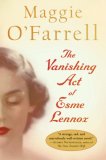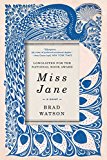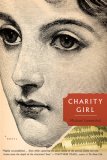Summary | Excerpt | Reading Guide | Reviews | Beyond the book | Read-Alikes | Genres & Themes | Author Bio

Iris Lockhart is comfortable and confident in her skin: single,
successful, and somewhat self-absorbed in her fashion business, her affair with
a married man, and her sexually ambiguous relationship with her stepbrother. But
something opens up in her when she flips through the admissions book of
Cauldstone, a psychiatric hospital for women. Iris is appalled when she reads
the entries for women committed in the 1930s at the same time as her great-aunt
Esme, entries that testify "of refusals to speak, of unironed clothes, of
arguments with neighbors, of hysteria, of unwashed dishes and unswept floors, of
never wanting marital relations or wanting them too much or not enough or not in
the right way or seeking them elsewhere." Behavior that Iris considers modern
would have gotten her institutionalized not so very long ago, and the novel
makes much of this point by contrasting Iris's contemporary lifestyle with
flashbacks to her great-aunt's girlhood in colonial India and Edinburgh. Her
great-aunt's plight draws Iris out of herself and deep into her family's
history. As she struggles with how to care for Esme, Iris begins to discover the
twin tragedies that bookended Esme's life before Cauldstone and the family
secrets that redeem her unspeakably tragic incarceration.
The virtue of this book is its absorbing, suspenseful narration. The reader
joins Iris on a kind of detective hunt for her family's true story, and
O'Farrell masterfully times the clues to both gratify the hunger for answers and
extend the mystery even further. Yet the book's downfall is how thoroughly it
sacrifices character development to the rhythms of its engrossing plot. The book
dips into the heads of its female protagonists—Iris, Esme, and Esme's sister
Kitty—but all three remain stock characters without true interiority. Their
thoughts and actions are calculated not to reveal how women in their situation
might feel but, rather, to reveal the pieces of the puzzle with deft narrative
control. This is a serious flaw in a work that aims to pierce the stereotype of
the hysterical woman. Because of course it turns out that Esme was never insane,
merely uncategorizable by the constricting definitions of Edwardian femininity.
Uninterested in parties and men, fascinated by the sensual details of the
natural world, Esme is like an artist without a medium of expression. By failing
to delineate her further, O'Farrell has missed an opportunity to portray the
underside of patriarchy, the inner consciousness or never fully quenched
resistance of the silenced woman.
The English and Scottish reviews of this book (it was published in August 2006 in the UK) heralded The Vanishing Act of Esme Lennox as O'Farrell's best to date and a worthy fulfillment of the promise that she
evinced in her first novel, After You'd Gone. Many laud the author for
her brave decision to depart from her earlier, more overblown style in favor of
something leaner; perhaps this accounts for the novel's curious reluctance to
probe its characters' psyches with greater depth. The most frequently used
adjective to describe the story is "haunting," as if Iris and Esme are not flesh
and blood but shades who linger in the mind despite their ghostly outlines.
From first word to last, this is good, old-fashioned storytelling. Read
The Vanishing Act of Esme Lennox to vanish into an intense, gothic world
of women too entirely present for their own good.
![]() This review was originally published in The BookBrowse Review in October 2007, and has been updated for the
June 2008 edition.
Click here to go to this issue.
This review was originally published in The BookBrowse Review in October 2007, and has been updated for the
June 2008 edition.
Click here to go to this issue.

If you liked The Vanishing Act of Esme Lennox, try these:

by Brad Watson
Published 2017
Astonishing prose brings to life a forgotten woman and a lost world in a strange and bittersweet Southern pastoral.

by Michael Lowenthal
Published 2008
Charity Girl examines one of the darkest periods in our history, when patriotic fervor and fear led to devastating consequences. During World War I, the U.S. government went on a moral and medical campaign, quarantining and incarcerating young women who were thought to have venereal diseases. They were called “charity girls”
Your guide toexceptional books
BookBrowse seeks out and recommends the best in contemporary fiction and nonfiction—books that not only engage and entertain but also deepen our understanding of ourselves and the world around us.